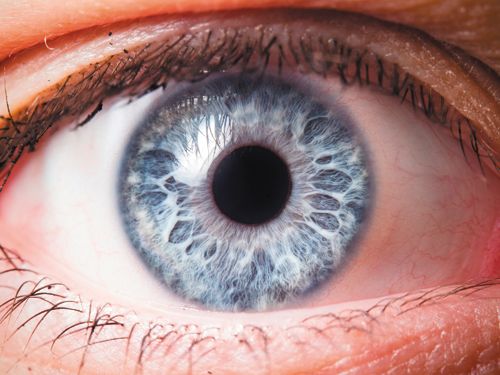Exploring Ocular Disease Using Metabolomics
Researchers from the Medical University of Bialystok, Poland, have used metabolomics and liquid chromatography quadrupole time‑of‑flight mass spectrometry (LC–QTOF‑MS) to study human ocular fluids.
Photo Credit: photoJS/Shutterstock.com

Researchers from the Medical University of Bialystok, Poland, have used metabolomics and liquid chromatography quadrupole timeâofâflight mass spectrometry (LC–QTOFâMS) to study human ocular fluids (1).
Severely debilitating and often devastating for life quality, eye diseases such as cataracts, glaucoma, diabetic retinopathy, or ageârelated macular degeneration affect millions globally with numbers expected to increase in the following decades. In the US alone, the National Eye Institute estimates the number of people affected by the most common eye diseases will double by 2050 (2), however, aqueous humor (AH), the transparent fluid responsible for supplying nutrients and removing metabolic waste from avascular tissues in the eye, is one of the least explored human fluids by modern metabolomic techniques. This is despite the huge potential for studying human AH with metabolomics, which could offer increased understanding of the mechanisms at play during disease development and even indicate promising metabolic pathways for drug targets.
Currently, only a few studies have applied metabolomics to AH (3–7) with most using animal models and favouring the use of nuclear magnetic resonance spectroscopy (NMR). The current study aimed to develop a strategy for the extraction of metabolites from AH and their analysis by LC–QTOF-MS for the detection of the highest number of metabolites by a single analytical platform.
Researchers tested multiple protocols for AH sample preparation before metabolic fingerprinting analysis with the best results obtained with a mixture of methanol:ethanol (1:1). Diluting the AH samples twice, 2 μL of extracted sample was analyzed using reversed phase chromatography with QTOFâMS detection, identifying over 1000 metabolic features from which almost 250 were identified putatively and the identify of over 50 were confirmed by MS/MS fragmentation. These initial results hint towards a greater than previously thought role for amino acids, lipids, oxidative stress, and microbial metabolites in the development of eye diseases, but more research is required. - L.B.
References
- K. Pietrowska, D.A. Dmuchowska, Paulina Samczuk, et al., J. Anal. Methods Chem.1–13 (2017).
- National Eye Institute Graphic: https://goo.gl/x4Qhy4 [Accessed: 30/03/17]
- C. Barbas-Bernardos, E.G. Armitage, A. García, et al., J. Pharm. Biomed. Anal.127, 18–25 (2016).
- Z. Song, H. Gao, H. Liu, and X. Sun, Curr. Eye Res.36(6), 563–570 (2011).
- Z. Song, Y. Gong, H. Liu, Q. Ren, and X. Sun, Mol. Vision 17, 2056–2064 (2011).
- A. Mayordomo-Febrer, M. López-Murcia, J. M. Morales-Tatay, D. Monleón-Salvado, and M. D. Pinazo-Durán, Exp. Eye Res. 131, 84–92 (2015).
- M.B. Tessem, T. F. Bathen, J. C Ìejková, and A. Midelfart, Invest Ophthalmol. Visual Sci.46(3), 776–781 (2005).

New Method Explored for the Detection of CECs in Crops Irrigated with Contaminated Water
April 30th 2025This new study presents a validated QuEChERS–LC-MS/MS method for detecting eight persistent, mobile, and toxic substances in escarole, tomatoes, and tomato leaves irrigated with contaminated water.

.png&w=3840&q=75)

.png&w=3840&q=75)



.png&w=3840&q=75)



.png&w=3840&q=75)












